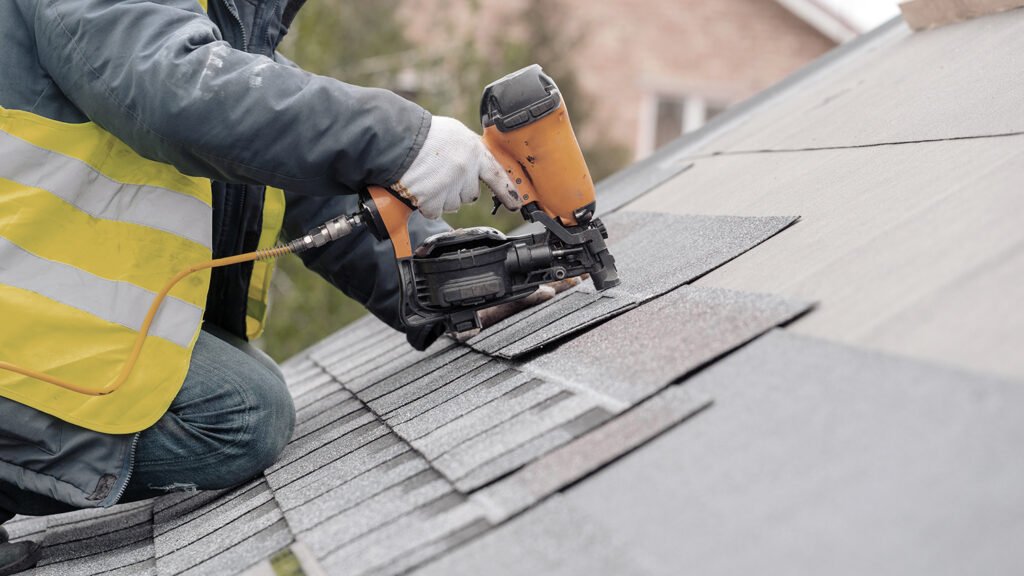A leaking roof in a commercial building can quickly escalate from a minor inconvenience to a major problem affecting operations, safety, and finances. When water begins to seep through the roof, it threatens the structural integrity of the building and can damage equipment, inventory, and important documents.
Addressing a commercial roof leak promptly and methodically is critical to minimize damage and maintain a safe environment for employees and customers. We will explore practical steps to take when you notice a leak in your commercial roof, helping you respond effectively and protect your property.
Immediate Actions to Take When Your Commercial Roof Starts Leaking
1. Locate the Source of the Leak
The first step in handling a commercial roof leak is identifying where the water is coming from. Water can travel along beams and insulation before it becomes visible inside, so the apparent spot of the leak may not be the exact point of entry.
Inspect the roof’s surface carefully, looking for obvious signs such as holes, cracks, or damaged flashing. Check the ceiling for water stains, bubbling paint, or damp spots inside the building. Taking the time to locate the source accurately is essential because it guides the repair efforts and prevents future leaks from recurring.
Remember to do this safely, and if climbing onto the roof yourself is not possible or safe, arrange for a professional inspection as soon as possible—companies like Apex Restoration and Roofing can provide thorough assessments to identify and address the problem efficiently.
2. Contain and Minimize Water Damage
Once the leak has been identified or while it is being pinpointed, take immediate steps to control water intrusion and limit damage inside the building. Use buckets, tarps, or other containers to catch dripping water and prevent it from pooling on floors or damaging equipment.
Move valuable or sensitive items away from the leak zone to protect them. If water has already caused dampness in the ceiling or walls, use fans and dehumidifiers to dry the area and reduce the risk of mold growth. Promptly containing the water is critical in preventing secondary damage that can lead to more costly repairs and safety hazards.
3. Document the Damage and Conditions
Thorough documentation of the leak and its impact is important for insurance claims and future maintenance planning. Take photos and videos of the leak source, water accumulation, and any damage to interior elements like ceilings, walls, or inventory. Keep a detailed record of when the leak was first noticed, what steps have been taken, and any correspondence with repair providers or insurance companies.
This information will be useful when filing claims or negotiating repairs. Well-documented records also help track recurring issues, indicating larger problems with the roofing system that need addressing.
4. Notify Building Management and Relevant Parties
Inform key stakeholders about the roof leak promptly. This includes building management, property owners, and anyone responsible for maintenance and repairs. If the building houses tenants or multiple businesses, notify them to ensure they take precautions to protect their property.
Early communication helps coordinate a quick response and can reduce disruptions to business operations. It also ensures that everyone understands the seriousness of the situation and collaborates on solutions, such as scheduling repairs or temporary workarounds.
5. Schedule a Professional Roof Inspection and Repair
After the immediate damage control, arrange for a thorough roof inspection by a trusted roofing company. A professional assessment will determine the full extent of the damage and recommend the necessary repairs or replacements. Repairs might range from patching small holes to replacing entire sections of roofing material, depending on the severity of the leak.
Timely repairs are vital to prevent the leak from worsening, which could compromise the building’s structural integrity and lead to even higher costs. Be sure to choose a provider with solid reviews and a track record of reliability, ensuring that the roof is repaired to withstand future weather challenges.
6. Review Maintenance and Prevention Measures
A leak is often a sign that the roofing system needs better upkeep. Once the immediate issue is resolved, review your building’s roof maintenance schedule. Regular inspections, cleaning gutters and drains, and addressing minor issues early can reduce the likelihood of leaks developing. Ensure routine maintenance checks are conducted, especially after storms or severe weather, to catch potential problems before they escalate.
Investing in preventative care extends the life of your roof and safeguards your business operations from unexpected interruptions caused by leaks or roof failures.
7. Consider Temporary Protective Solutions
Consider temporary protective measures if the repair process takes some time or weather conditions delay permanent fixes. Installing tarps or waterproof coverings over the affected area can prevent further water intrusion in the short term.
Ensure these temporary solutions are securely fastened and inspected regularly to withstand rain or wind. While these are not substitutes for proper repairs, they help minimize damage and maintain safety until the roof is fully restored.
When a commercial roof begins leaking, the priority is to quickly locate the source, control water damage, and notify all involved parties. Documenting the issue and securing professional repairs are crucial steps, alongside implementing preventative maintenance practices for the future. Temporary protective measures and insurance coordination provide additional support during the repair process.
Clear communication with occupants and long-term planning help ensure the roof continues to serve its purpose without recurring problems. Taking these measures promptly and thoughtfully helps safeguard the physical building and the ongoing business activities it supports.
